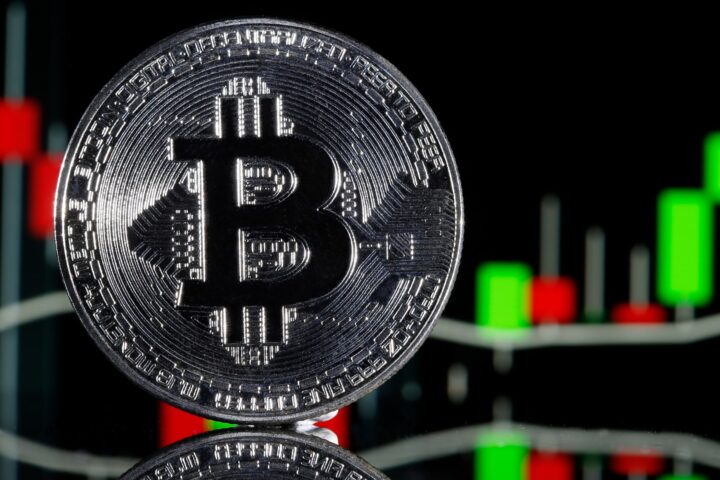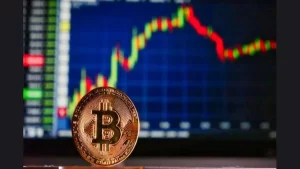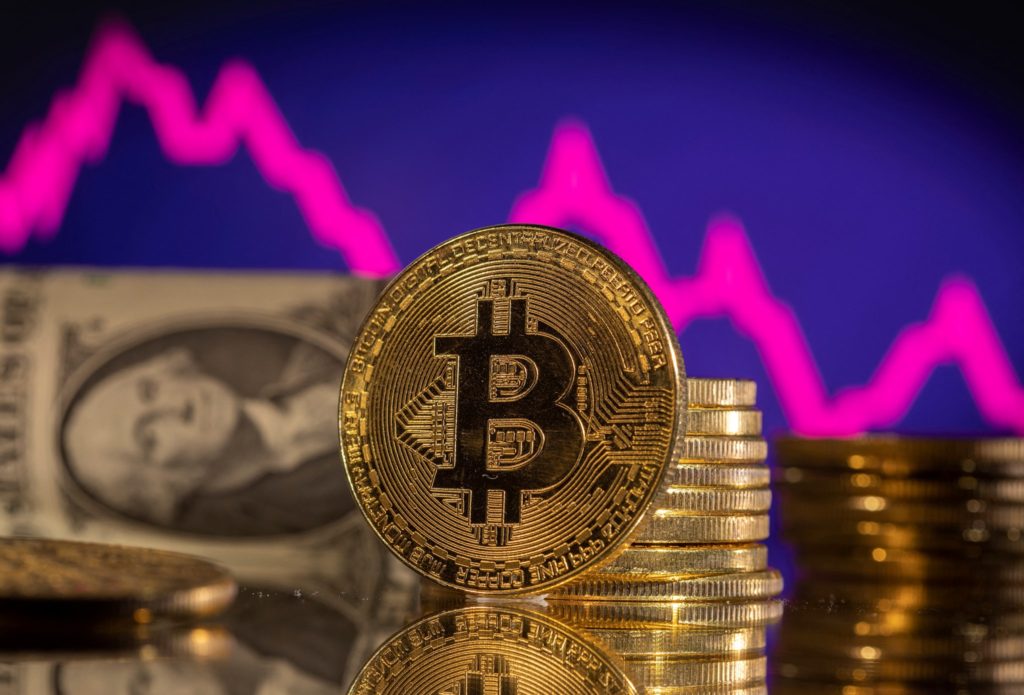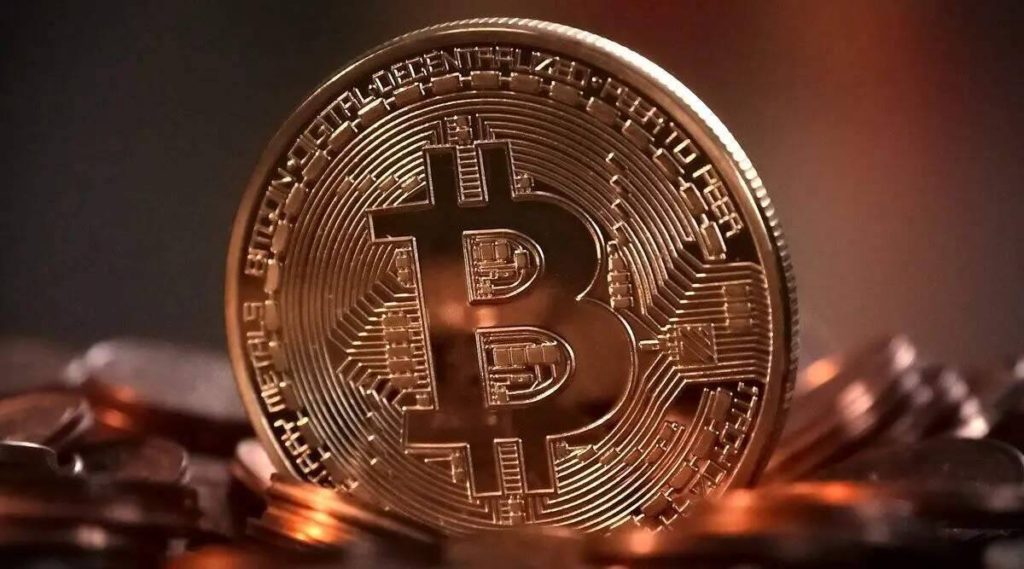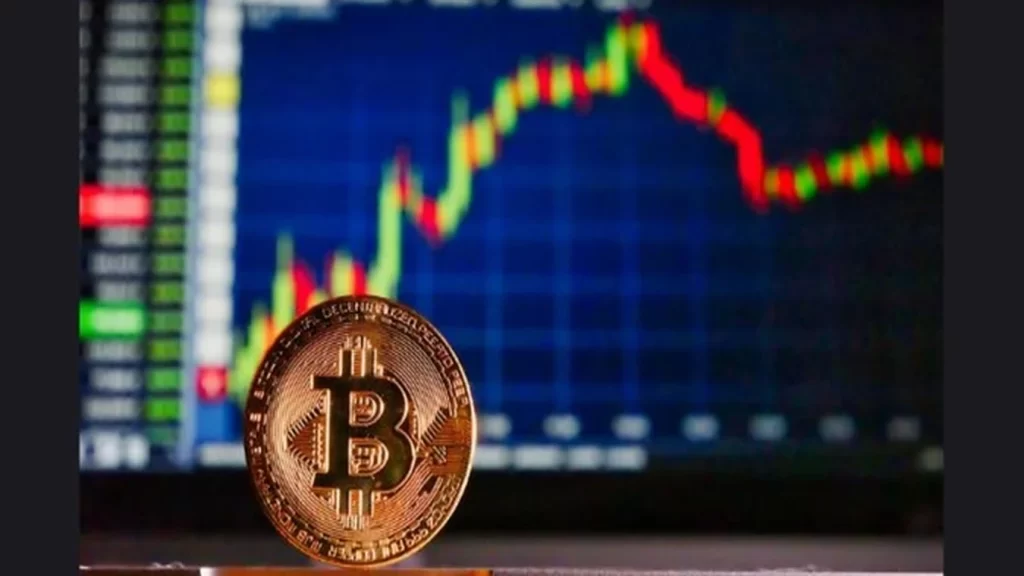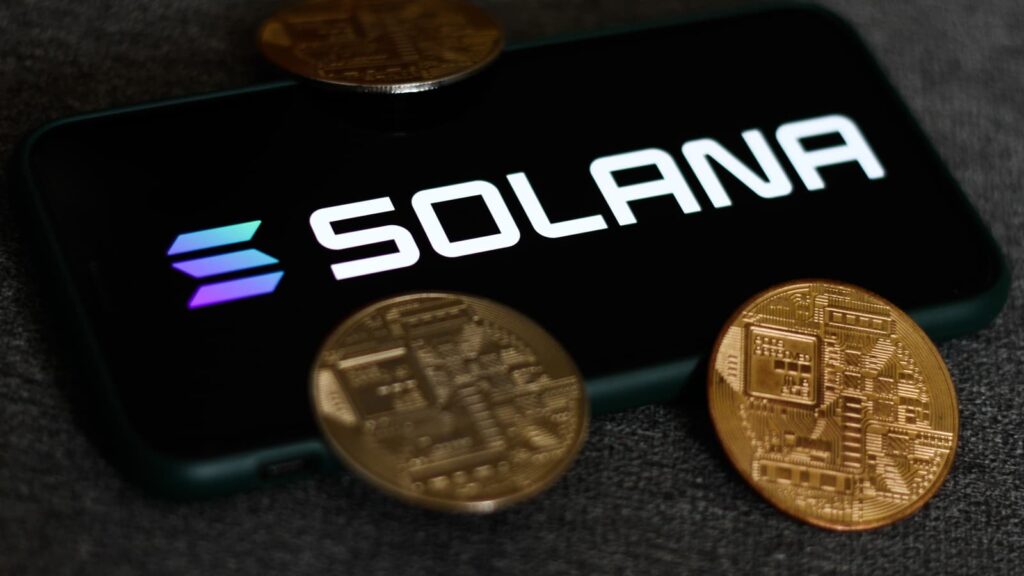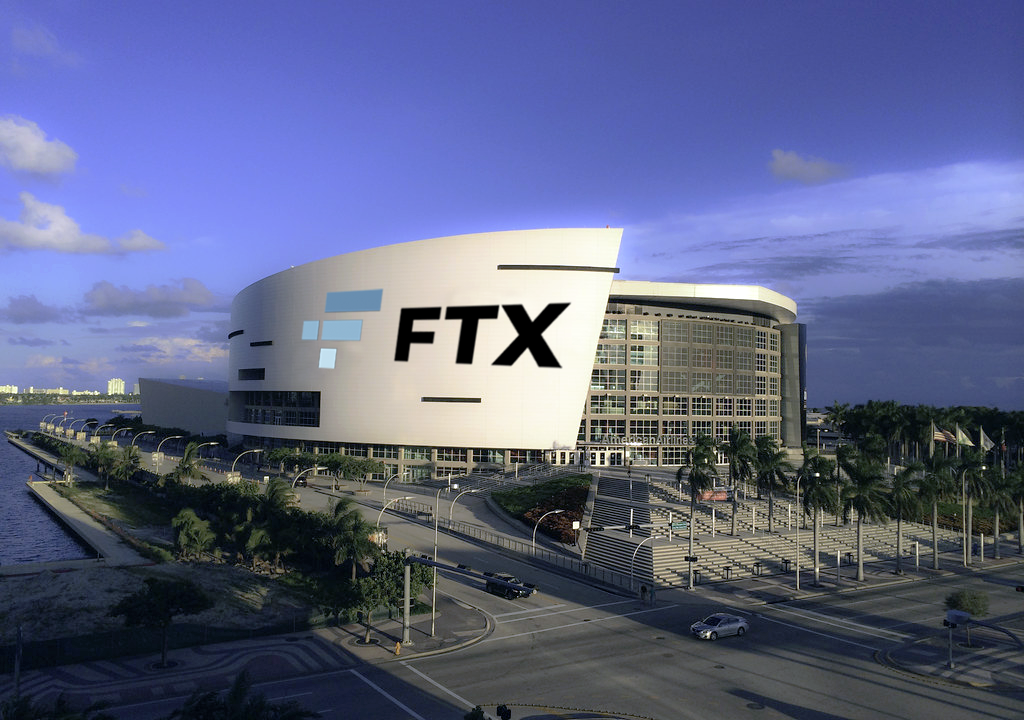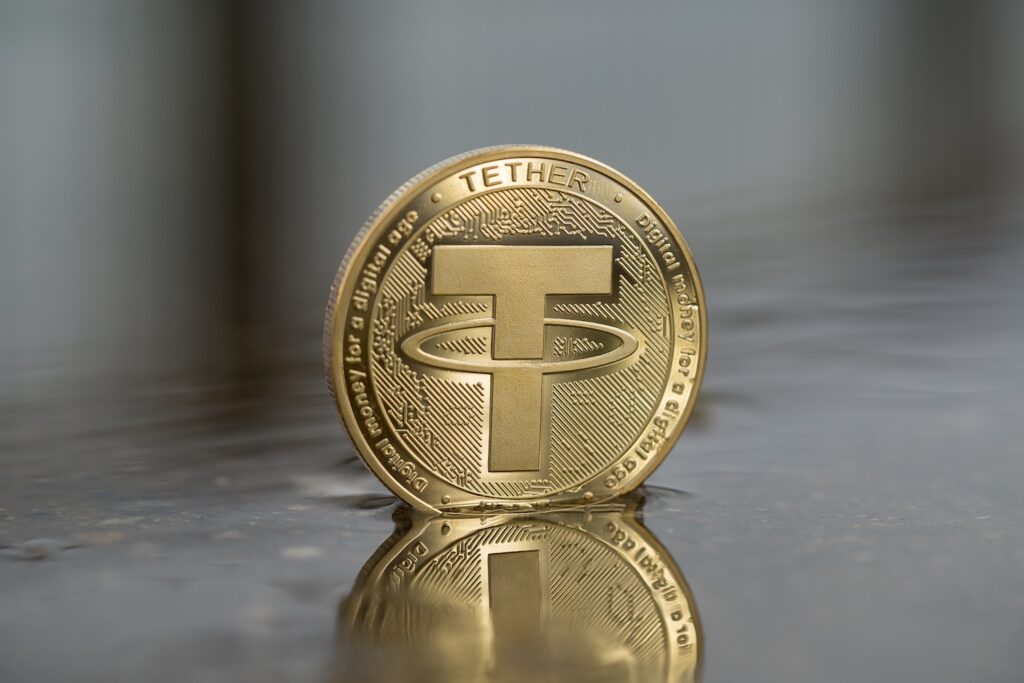The approval of a Bitcoin exchange-traded fund (ETF) by January 10, 2024, is now almost certain, according to analysts at K33 Research.
In a report released on December 19, K33’s Head of Research, Anders Helseth, and Senior Analyst, Vetle Lunde, emphasized that recent developments surrounding ETFs, including filings by BlackRock and ARK Invest, adopting a cash-creation setup for their funds, have greatly increased the likelihood of approval in January.
The report also highlighted the robust performance of Bitcoin over the past week. Analysts observed that the trading volumes for spot Bitcoin had surged significantly compared to previous months.
This increase in volume was attributed to the strong rally of Bitcoin, which attracted new buyers and motivated profit-taking by sellers, resulting in price consolidation with elevated trading activity.
Despite the surge in spot Bitcoin trading, the report noted that open interest in BTC perpetual contracts had reached new yearly lows, indicating a lack of retail speculation.
In contrast, institutional investors on the Chicago Mercantile Exchange (CME) displayed an increasing appetite for Bitcoin-related risk, with CME open interest growing by 3,100 BTC in the past week.
However, analysts anticipated that this trend might change following the approval of spot ETFs.
READ MORE: Tether Takes Proactive Measures to Combat Illicit Use, Aids Law Enforcement
Once spot ETFs receive approval, the analysts predicted a “significant rotation” out of futures-based ETFs on the CME.
Additionally, active traders were likely to realize profits on their current long positions, collectively reducing the dominance of CME in the Bitcoin derivatives market.
The report also drew attention to the notable performance of certain altcoins, such as Solana Ordinals (ORDI) and Bonk (BONK), which experienced substantial gains in the last 20 days, rising by 22%, 114%, and 338%, respectively.
While such altcoin enthusiasm is often considered a sign of a market top, the analysts explained that this could be advantageous for Bitcoin.
The analysts suggested that the surge in altcoin enthusiasm helps release speculative pressure from Bitcoin, potentially reducing the risk of liquidation cascades.
Altcoins, in this context, serve as a positive pressure valve for those seeking excitement in the market while allowing for healthier leverage conditions in Bitcoin.
Consequently, Bitcoin may benefit from the diversification of speculative interest into altcoins.
The surge in demand for creating inscriptions on non-Bitcoin-based blockchain networks has propelled several prominent networks, such as Arbitrum and BNB Chain, to achieve unprecedented levels of throughput.
According to data analysis by the pseudonymous researcher known as “hildobby,” who works with the crypto venture fund Dragonfly, various blockchain networks have experienced their highest daily peak transactions per second (TPS) in December.
Among these networks are Goerli, zkSync, Arbitrum, Gnosis, and the BNB Chain, with inscriptions accounting for a substantial portion of their transaction activity, ranging from 83% to 97%.
Furthermore, Fantom, Celo, Avalanche, and Polygon also set new daily TPS records in November.
The surge in inscription activity has not only impacted daily TPS but also hourly records.
Optimism reached an hourly TPS record of 87,960 on December 19, while Avalanche achieved an hourly TPS record of 289,285 on December 18, as reported by an analyst’s Dune Analytics dashboard.
This inscription frenzy has caused a significant uptick in transaction counts across leading blockchain networks over the past two years. Additionally, the amount spent on gas fees for minting new inscriptions has reached all-time highs.
READ MORE: NFT Trader Hit by Security Breach, Millions in NFTs Stolen by Hackers
Similar to the concept of Bitcoin Oracles, users have discovered that they can create inscriptions using transaction call data on Ethereum Virtual Machine (EVM)-based chains.
This capability enables them to mint various items, from meme coins to social media profile pictures, increasing the demand for blockchain space.
Ava Labs co-founder Kevin Sekniqi highlighted that on December 19, the Avalanche C-Chain (contract chain) reached a remarkable 977 TPS, with many EVM chains experiencing unprecedented loads due to inscriptions.
He emphasized that the inscription trend has served as a rigorous stress test for existing blockchain infrastructure, underscoring the necessity for subnets to handle the heightened demand.
However, the inscription gold rush has not been without challenges.
It has led to full and partial network outages on several platforms, including Arbitrum, zkSync, Cronos, and Celestia, as reported by Cointelegraph on December 19.
These issues reflect the need for robust and scalable solutions to accommodate the growing interest in inscription activities across blockchain ecosystems.
Several prominent applicants seeking approval for a Bitcoin exchange-traded fund (ETF) in the United States are revising their applications to conform to the cash redemption model mandated by securities regulators.
Investment management giant BlackRock and ARK Invest, led by Cathie Wood, have both made updates to their S-1 registration statements for a proposed spot Bitcoin ETF, which have been submitted to the U.S. Securities and Exchange Commission (SEC).
These amendments, filed on December 18, primarily pertain to the creation and redemption process for proposed spot Bitcoin ETFs.
Both BlackRock and ARK have chosen to embrace the cash redemption system, as opposed to in-kind redemptions, which involve non-monetary assets like Bitcoin.
ARK’s registration statement hinted that its ARK 21Shares Bitcoin ETF would exclusively facilitate cash creations and redemptions.
The document did, however, mention the possibility of authorized participants being able to engage in in-kind transactions for creating and redeeming shares, pending regulatory approval.
Similarly, BlackRock filed a comparable update, emphasizing that in-kind transactions could occur, but only if approved by regulators.
READ MORE: Bitcoin Transaction Fees Surge, Sparking Debate on Future Solutions
These transactions would still involve cash exchanges, but may also involve Bitcoin if approved by the Nasdaq Stock Market.
Eric Balchunas, an ETF analyst at Bloomberg, suggested that ARK and its ETF partner, 21Shares, initially sought alternatives to cash creations and had creative solutions for in-kind redemptions.
However, their shift to cash redemption indicates the SEC’s inflexibility on this matter, potentially indicating a resolution to the ongoing debate and a favorable outlook for approval in January.
The SEC’s insistence on a “cash-only” requirement implies that authorized participants will only be able to acquire additional ETF shares by providing the corresponding amount of cash, as noted by investor and consultant Vance Harwood.
Harwood further explained that the SEC’s stance is understandable, as it ensures transparency regarding the source of the ETF’s underlying Bitcoin holdings, which are expected to be purchased from reputable exchanges.
WisdomTree, a global ETF provider, also submitted an S-1 amendment for its spot Bitcoin ETF, the WisdomTree Bitcoin ETF, on December 18.
Notably, WisdomTree has opted to retain the option of in-kind creation and redemption.
In summary, several key players in the race for a U.S. Bitcoin ETF are adjusting their applications to comply with the SEC’s cash redemption model, indicating a potential resolution to regulatory hurdles and increasing the likelihood of approval in the near future.
On December 19, Bitcoin made a triumphant return, surging above the $43,000 mark, driven by fresh developments surrounding the prospective launch of the United States’ inaugural spot Bitcoin exchange-traded fund (ETF).
Data sourced from Cointelegraph Markets Pro and TradingView illustrated a remarkable recovery in Bitcoin’s price, propelling it to local highs of $43,456 following the daily close.
After an initially uncertain start to the week, BTC/USD rapidly gained momentum, with the December 18th candle closing more than 5% above the day’s lowest point.
Subsequently, news emerged that asset management giant BlackRock, a contender seeking approval for the first-ever U.S. spot Bitcoin ETF, had revised its redemption policy to include Bitcoin as an option.
According to the latest version of BlackRock’s S1 filing with the U.S. Securities and Exchange Commission (SEC), the redemption of a shareholder’s shares for the underlying Bitcoin generally would not trigger a taxable event.
The document also outlined new regulations regarding the exchange of baskets of shares for cash instead of Bitcoin, with the latter contingent upon regulatory approval.
The SEC is scheduled to commence its final deliberations on spot ETFs in early January 2024, making the upcoming month a critical juncture for Bitcoin enthusiasts.
READ MORE: Grayscale Assesses Tax Implications for Spot Bitcoin ETFs Amid Regulatory Scrutiny
Multiple Bitcoin price predictions are contingent on the successful approval of the ETF, which is now perceived as highly probable after years of delays and rejections.
Bob Loukas, a trader and investor, expressed confidence in the approval process, remarking that “the level of SEC engagement and back-and-forth on the Bitcoin ETF tells us this is a 99.9% done deal.”
Meanwhile, the SEC delayed its final decision on several Ether ETFs until May.
In the interim, Bitcoin faces significant events, including the annual candle close and the release of various macroeconomic data, potentially contributing to holiday season volatility.
Traders are closely monitoring price levels, with the possibility of Bitcoin dipping below $40,000 still looming.
Crypto Ed, the founder of trading group CryptoTA, suggested this scenario might unfold before a final upward surge, potentially driving BTC/USD to $50,000 by the end of 2023.
Additionally, popular trader and analyst Matthew Hyland expressed optimism about further upside, citing a bullish divergence in Bitcoin’s relative strength index (RSI) versus its price on daily timeframes.
At the time of writing, the daily RSI stood at 60.45, having cooled off from the elevated levels when Bitcoin reached its recent 19-month high above $44,000.
The Solana memecoin frenzy is showing no signs of slowing down, as one daring trader managed to turn a mere $226,000 investment into an astonishing $1.6 million windfall, all thanks to a token featuring a beanie-wearing dog as its mascot.
Between December 13 and 15, this intrepid crypto enthusiast decided to dive headfirst into the world of memecoins by purchasing over 19 million Dogwifhat (WIF) tokens.
These tokens, with their endearing dog-themed branding, made their debut on the Solana network’s trading platforms.
Remarkably, the trader acquired these tokens at an average price of just $0.01137 each.
As of the latest data, the total value of these tokens now stands at approximately $1.69 million, delivering the trader a staggering profit of approximately $1.47 million within a mere five days.
This remarkable success story mirrors a broader trend that is currently sweeping through the Solana ecosystem.
Memecoins built on the Solana network have been posting extraordinary gains, capturing the attention of the crypto community.
Notably, on December 8, a dog-themed memecoin known as Bonk (BONK) achieved a significant milestone by becoming the third-largest memecoin in terms of market capitalization.
READ MORE: Palau Launches Phase Two of PSC Program with Ripple Partnership for Digital Currency Expansion
This achievement placed Bonk alongside the likes of fellow dog-themed memecoins such as Shiba Inu and Dogecoin, surpassing even Pepecoin, the frog-themed memecoin.
In the 30 days leading up to December 11, the price of Bonk experienced a staggering surge of 370%, soaring from $0.0000028 to its current price of $0.00002.
This impressive growth outpaced other prominent dog memecoins like SHIB and DOGE, which saw comparatively modest increases of 20% and 35% during the same period.
Interestingly, the fervor surrounding Bonk had a ripple effect on sales of Solana’s Saga mobile phone. Following its launch, owners of the Solana Saga phone received an unexpected airdrop of 30 million Bonk tokens.
Capitalizing on the rising token price, users seized the opportunity to turn a profit by purchasing the phone and subsequently selling the tokens they received.
In summary, the Solana memecoin craze continues to captivate the crypto world, with traders reaping substantial rewards in a matter of days.
The soaring popularity of memecoins within the Solana network, exemplified by the success of Bonk, demonstrates the ongoing appetite for speculative and meme-driven cryptocurrencies.
On December 18, metaverse technology company Improbable made an important announcement, revealing the sale of its gaming venture, The Multiplayer Group (MPG), to Keywords Studios for a staggering £76.5 million ($97.1 million).
Improbable’s CEO, Herman Narula, described Keywords as a “like-minded business partner” and expressed his excitement for MPG’s new journey.
Keywords Studios is well-known in the gaming industry for its collaborations with major players like Activision Blizzard, Bethesda, Zenimax, Epic Games, and 2K.
This strategic move aligns with Improbable’s venture strategy for 2024, marking a significant shift from their initial acquisition of MPG for approximately £30 million back in 2019.
The company also unveiled its 2024 predictions, emphasizing the enduring significance of the metaverse and Web3 technologies.
Narula confidently asserted that the metaverse, fueled by the convergence of gaming, VR/XR, and Web3, will be a growth hotspot in 2024, shaping the future of virtual events.
Narula’s insights highlight a shift in business interests toward decentralized metaverse platforms, emphasizing brands’ desire for autonomy and the right business model.
Improbable anticipates a proliferation of experiences within decentralized environments as businesses graduate from platform experimentation.
READ MORE: Taiwanese Authorities Issue Warning Against Cryptocurrency Betting on Upcoming Presidential Election
Improbable, a Softbank-backed metaverse developer, foresees increased consolidation and streamlining across the gaming, Web3, and crypto sectors in 2024, leading to a more robust and interconnected startup ecosystem.
In 2023, Improbable collaborated with Major League Baseball to create a virtual baseball stadium, providing fans with immersive digital reality experiences.
The company envisions further integration of physical-digital crossovers within the gaming world and anticipates the growing utilization of generative artificial intelligence (AI) for content creation and business applications.
Peter Lipka, Improbable’s co-founder and chief operating officer, predicts the emergence of AI-generated 3D interactive objects as a significant trend in 2024.
Improbable’s optimism about the future of Web3 and gaming echoes sentiments from other industry experts.
Executives Yat Siu and Johnson Yeh from the GameFi sector anticipate more users entering Web3 through blockchain games in the coming year.
As the metaverse continues to evolve, Improbable and its contemporaries are poised to play a pivotal role in shaping the digital landscape of the future.
The crypto community is eagerly anticipating the potential approval of a spot Bitcoin exchange-traded fund (ETF) in the United States, with some experts cautioning that this could have unintended consequences for cryptocurrency exchanges.
Industry insiders are forecasting that a spot BTC ETF could become tradable as early as 2024.
This development, coupled with Bitcoin’s upcoming block reward halving expected in April, has led Blockstream CEO Adam Back to believe that BTC’s price could surge to $100,000.
Additionally, proponents like Jan3 CEO Samson Mow suggest that the approval of a spot Bitcoin ETF in the U.S. could potentially propel Bitcoin to as high as $1 million within a matter of “days to weeks.”
However, the outlook for centralized cryptocurrency exchanges is not as rosy, according to ETF Store president Nate Geraci and Bloomberg ETF analyst Eric Balchunas.
Geraci recently expressed his concerns on X (formerly Twitter), stating that once approved, a spot Bitcoin ETF in the U.S. could lead to a “bloodbath” for cryptocurrency exchanges.
Geraci argues that retail investors trading spot Bitcoin ETFs will enjoy the benefits of institutional-level trade execution and lower commissions.
In contrast, users of crypto exchanges will continue to face higher trading costs and “retail trade execution,” which Geraci emphasizes must improve in order to remain competitive with a spot Bitcoin ETF.
Eric Balchunas underscores that a spot Bitcoin ETF is expected to carry a trading cost of just 0.01%, which aligns with the average fee for ETF trading.
READ MORE: Palau Launches Phase Two of PSC Program with Ripple Partnership for Digital Currency Expansion
In comparison, exchanges like Coinbase currently charge fees that can go as high as 0.6%, depending on factors such as the cryptocurrency, transaction size, and trading pairs.
The introduction of a spot Bitcoin ETF is likely to intensify price competition within the crypto industry.
Balchunas believes that this will redirect funds away from exchanges that invest heavily in advertising, such as during events like the Super Bowl, to attract users.
Balchunas commented, “It would be the last ‘Crypto Super Bowl’ if they launch ETFs because ETFs are such a lean and cost-effective industry.
Some of these crypto exchanges have been capitalizing on their high fees, and this shift could change the landscape significantly.”
Historically, Coinbase has derived a substantial portion of its revenue from transaction fees. In 2022, the platform generated $2.4 billion in transaction fees, representing 77% of its total net revenue of $3.1 billion.
Nonetheless, Coinbase has been actively diversifying its revenue streams by offering additional income-generating services like subscriptions, aiming to reduce its reliance on fees.
In the quarter ending on October 31, the now-defunct cryptocurrency exchange FTX has been burning through an astonishing $53,000 per hour on bankruptcy lawyers and advisers, according to the latest compensation filings.
Court records from December 5 to December 16 reveal that bankruptcy lawyers have amassed a staggering $118.1 million in fees from August 1 to October 31.
Over this 92-day period, this amounts to a jaw-dropping daily expenditure of $1.3 million or an astonishing $53,300 per hour.
Topping the list of charges is the management consulting firm Alvarez and Marshall, demanding a colossal $35.8 million for their services during these three tumultuous months.
Following closely behind, global law firm Sullivan & Cromwell billed $31.8 million, with an average hourly rate of $1,230.
Global consulting firm AlixPartners enters the fray with $13.3 million for professional services linked to forensic investigations, while Quinn Emanuel Urquhart & Sullivan submitted a bill for $10.4 million during the same timeframe.
READ MORE: Kazakhstan’s Digital Tenge Shines in Successful Pilot Project, Gears Up for 2024 Expansion
Various smaller advisory firms also added to the tally, contributing more than $26.8 million to the overall expenses.
A pseudonymous FTX creditor shared figures on December 17, suggesting that the total legal fees fully paid since the commencement of the FTX bankruptcy case have soared to an astonishing $350 million.
Meanwhile, an earlier report filed on December 5 by the court-appointed fee examiner, Katherine Stadler, raised “significant areas of concern” regarding billings from larger advisory firms such as Sullivan & Cromwell, Alvarez & Marshall, and others, covering the period from May 1 to June 31.
The report cited apparent issues like top-heavy staffing, seemingly excessive meeting attendance, fees associated with non-working travel time, and various technical and procedural deficiencies in time entries, including vague and lumped entries, particularly concerning billings from Alvarez & Marshall.
In summary, the bankruptcy proceedings of FTX have resulted in a staggering expenditure on legal and advisory services, with some firms charging astronomical fees.
Concerns have been raised about billing practices and the transparency of these expenses, further complicating the complex bankruptcy process.
On December 16, the peer-to-peer trading platform NFT Trader fell victim to a security breach, resulting in the theft of millions of dollars’ worth of nonfungible tokens (NFTs).
NFT Trader officially acknowledged the incident on social media, urging users to take action by revoking delegations to two specific addresses: 0xc310e760778ecbca4c65b6c559874757a4c4ece0 and 0x13d8faF4A690f5AE52E2D2C52938d1167057B9af.
The stolen NFTs encompassed a variety of collections, including at least 13 Mutant Ape Yacht Club tokens, 37 Bored Ape tokens, VeeFriends, and World of Women NFTs, resulting in collective losses estimated at nearly $3 million, as reported by Revoke.cash.
In the aftermath of the hack, social media was flooded with rumors and misinformation.
Furthermore, the full extent of how many hackers exploited the security vulnerability remains unclear.
One of the attackers, in a public message, attributed the initial exploit to someone else and stated their intention to ransom the NFTs for their return.
The attacker’s message revealed a seemingly contradictory motivation, claiming to be initially interested in acquiring “residual garbage” but later realizing the potential value of the NFTs.
Despite this revelation, the attacker declared their indifference to personal gain and expressed a preference for scavenging leftover items.
READ MORE: Kazakhstan’s Digital Tenge Shines in Successful Pilot Project, Gears Up for 2024 Expansion
Moreover, the attacker admitted to having limited technical skills and proposed that victims pay a 10% bounty in Ether in exchange for the return of their NFTs.
They explained the difficulties they encountered in retrieving all affected NFTs simultaneously, which they claimed required substantial energy and time investment.
Their message emphasized the expectation of a deserving reward for their actions.
In an unexpected turn of events, one of the victims reported receiving a rare NFT along with 31 ETH, which was valued at nearly $70,680 at the time.
This development left the victim astonished, prompting them to question the surreal nature of the situation.
In conclusion, the security breach on NFT Trader on December 16 led to the theft of valuable NFTs, sparking confusion and speculation on social media.
The attacker’s motives remained enigmatic, with their actions blending a pursuit of value with an unconventional preference for “residual garbage.”
As the situation unfolded, victims were faced with unexpected gestures from the attacker, adding further complexity to an already perplexing incident.
Tether, the company responsible for the stablecoin Tether, has publicly revealed letters it sent to United States lawmakers addressing their concerns regarding the Department of Justice’s (DOJ) inquiries into the potential illicit use of its stablecoin.
These communications were dispatched to members of the U.S. Senate Committee on Banking, Housing, and Urban Affairs as well as the U.S. House Financial Services Committee on two separate occasions, November 16 and December 15.
In these letters, Tether emphasized its strong commitment to combatting the illicit utilization of stablecoins.
The primary objective of these letters was to respond to calls from Senator Cynthia Lummis and Representative French Hill made in October.
These lawmakers had urged the DOJ to thoroughly assess the extent to which both Binance and Tether might be providing substantial support and resources for terrorism.
These calls came after Hamas executed a coordinated attack against Israel on October 7, with the implication that some of the funding for these illicit activities was facilitated through cryptocurrency transactions.
In response, Tether outlined its existing measures to prevent illicit activities, including a Know Your Customer (KYC) program, transaction monitoring systems, and a proactive approach to identifying suspicious accounts and activities.
The company expressed its willingness to cooperate with law enforcement agencies globally, including the identification and freezing of addresses related to sanctions, illicit activities, or terrorist financing.
READ MORE: Bitcoin Price Soars as 2024 Promises Resurgence Amidst Changing Landscape
Tether also noted that its client reviews continue beyond the onboarding process, with the use of surveillance monitoring tools to continuously track client activity.
They specifically mentioned the use of the Reactor tool from Chainalysis, a leading blockchain surveillance tool employed by various U.S. government agencies.
Furthermore, Tether disclosed its collaboration with the Federal Bureau of Investigation (FBI) as part of its efforts to assist law enforcement in combating illicit activities and aiding victims in recovering their funds.
In a related development, Tether announced a voluntary wallet-freezing policy on December 9.
This initiative provides secondary market controls to freeze any activity associated with sanctioned individuals listed by the United States Office of Foreign Assets Control Specially Designated Nationals List.
Previously, in 2022, Tether had resisted proactively freezing wallets linked to suspicious activities.
However, increased regulatory scrutiny of cryptocurrency firms in the U.S. and worldwide prompted the company to reconsider its stance.
Tether’s CEO, Paolo Ardoino, stated, “Tether seeks to be a world-class partner to the U.S. as we continue to assist law enforcement and expand dollar hegemony globally.”
This increased scrutiny in 2023 has favored the market share of USDT, which currently stands at $90 billion according to CoinMarketCap.

